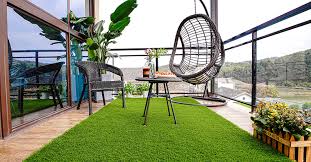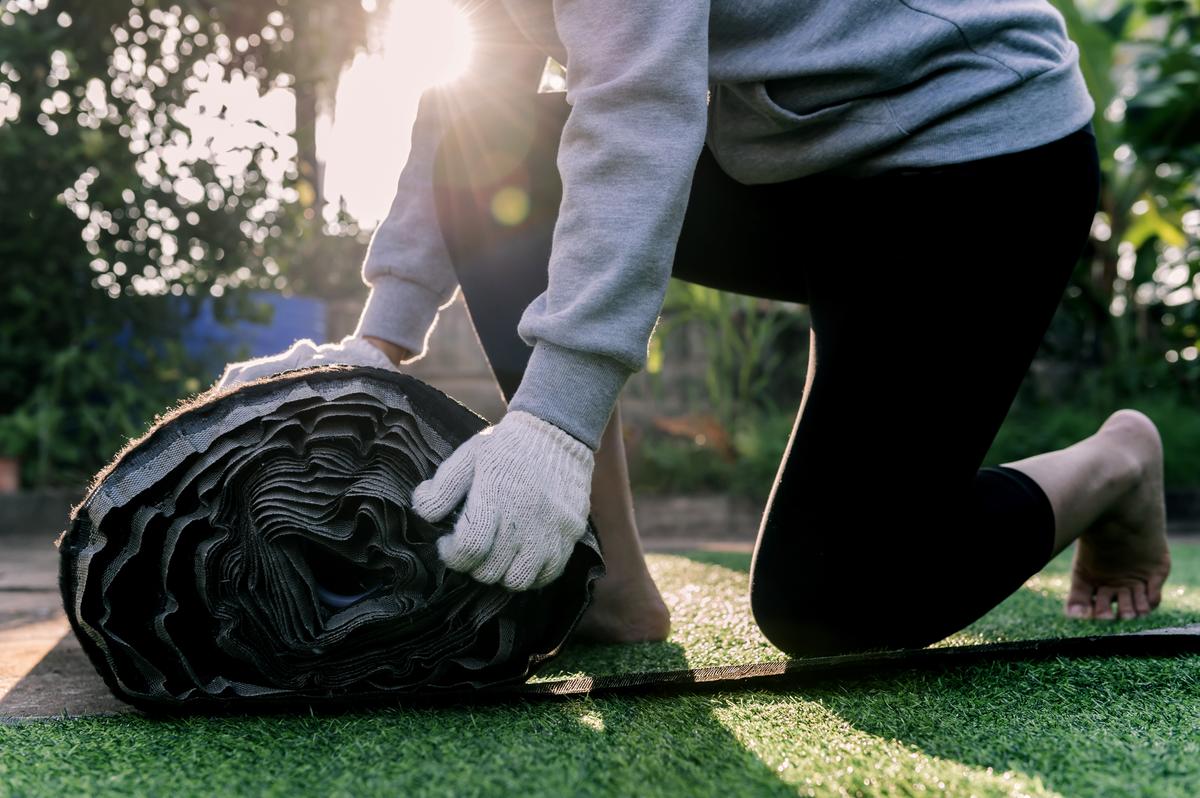
Jul 28 , 2025
9 Critical Mistakes to Avoid When Installing Artificial Grass (and How to Do It Right)
Introduction to Artificial Lawn Installation

Installing artificial turf transforms
RMS any space into a lush, low‑maintenance area. Moreover, it saves water and cuts upkeep time. Yet many installers slip up. This guide must help homeowners and contractors steer clear of common errors. By the end, you’ll know how to fix Artificial Grass perfectly every time.
Why Choose Synthetic Turf?
Synthetic turf looks real but lasts longer. It drains well and resists wear. Furthermore, it stays green year‑round. You’ll save on watering and mowing. Plus, kids and pets can play anytime without mud.
Who This Guide Is For
This post suits DIY enthusiasts and pros. If you plan a backyard makeover or a commercial patio upgrade, follow these steps. Avoid redoing costly mistakes. Read on to learn nine pitfalls—and how to fix them.
Mistake #1: Skipping Proper Ground Preparation
Digging deep before laying turf matters most. Without a solid base, your grass will ripple and shift. In addition, weeds can pop through.
Importance of Base Layer
A compacted base stops unevenness. First, remove existing sod and rocks. Then lay crushed stone or gravel. Compact it tightly. You’ll have a stable foundation for your synthetic grass.
Soil Compaction Tips
-
Use a plate compactor for best results.
-
You should have checked for levelness with a string line!
-
You can add more stone in low spots before compaction. It helps make low spots equal!
Mistake #2: Ignoring Drainage Requirements
Poor drainage leads to puddles and odors. Moreover, standing water can damage the turf backing.
Risks of Poor Water Flow
Pooling water invites algae and odors. It also shortens turf life. In addition, it can wash away infill materials.
Installing a Drainage System
-
Grade the base at a slight slope (1–2%).
-
Add a perforated pipe if heavy runoff occurs.
-
Cover with gravel before turf installation.
it's become bad and useless.
Aligning Turf Edges
Cut edges straight with a turf knife. Match the grass grain direction before seaming.
Using the Right Adhesive
Spread turf glue evenly on seam tape. Press turf edges firmly together. Place heavy boards on seams until the glue cures; it helps to fix easily and for a long time.
Mistake #3. Buying Grass in Stages
Purchasing artificial grass in batches may seem cost-effective but can lead to inconsistencies in color and texture. Grass from different production batches can vary slightly, creating noticeable patches.
Solution: Order all the turf you need at once, and add a little extra for future repairs.
Mistake #4. Ignoring Proper Drainage
Artificial grass generally drains better than natural lawns, but only if the base is correctly prepared. Without proper drainage, you risk water pooling and mold growth.
- Install a Permeable Base: Use crushed rock or decomposed granite to create a solid, permeable base.
- Add a Slope: Ensure a slight slope to guide water away from your home.
Insider Tip: High-quality artificial grass often features built-in drainage holes. Confirm the turf you choose has this feature.
Bonus Advice: In flood-prone areas, consider adding additional drainage channels beneath the turf to enhance water flow.
 Mistake #5. Failing to Level the Base
Mistake #5. Failing to Level the Base
A bumpy, uneven lawn looks unsightly and feels uncomfortable underfoot. Uneven surfaces can also cause premature wear.
- Compact the Base: Use a vibrating plate compactor to flatten and firm up the base. A 2- to 4-inch layer of road base over the dirt is the choice of many pros.
- Smooth It Out: After laying the base, rake and compact it again before installing the turf.
Extra Step: Use a laser level to check for evenness before proceeding with turf installation.
Mistake #6: Neglecting Edging and Restraints
Without solid borders, turf edges curl or lift over time. A proper restraint keeps the grass in place.
Edging Options Explained
Concrete curbs, timber batons, and metal strips all work well. Choose based on aesthetics and budget.
Securing Borders Properly
Nail or screw the edging material into the base. Ensure the top of the edge sits slightly below turf height.
Mistake #7: Ignoring Infill Requirements
Infill adds weight, stabilizes fibers, and improves drainage. Yet too much or too little can harm turf performance.
Benefits of Silica Sand
Silica sand weighs down turf and helps blades stand upright. It’s affordable and inert.
Alternatives Like Rubber Crumb
Rubber crumb adds extra cushioning for play areas. It’s pricier but ideal for sports fields.
Mistake #8: Not Brushing and Grooming Your Lawn
Freshly laid turf needs grooming. Plus, regular brushing keeps fibers fluffed.
Tools for Synthetic Turf Care
Use a stiff, nylon-bristled brush or a power broom. Avoid metal bristles—they shred fibers.
Frequency of Maintenance
Brush high-traffic areas weekly. Rinse every month to clear dust and debris.

Mistake #9: DIY Without Proper Skills
Even simple installs can go wrong. Certain steps require experience and specialized tools.
When to Call the Professionals
If you face slope challenges or complex drainage, hire experts. Professionals ensure a flawless finish.
Budgeting for Installation
Expect to spend ₹2000–₹4500 per square foot for pro installation. DIY costs drop to ₹1500–₹2500 per square foot—but risk mistakes.
Benefits of Artificial Grass
Artificial grass offers many perks over natural lawns. In addition to saving water, it stays perfect through seasons. Here are five short points:
-
Low Maintenance – No mowing, feeding, or aerating needed.
-
Durable – Withstands heavy foot traffic and pets.
-
Consistent Appearance – Remains lush green all year.
-
Eco‑Friendly – Cuts water use and chemical runoff.
-
Cost‑Effective – Saves money over the long term.
Best Areas to Install Synthetic Lawn
Artificial turf fits many locations. Moreover, it improves curb appeal and usability. Consider these five prime spots:
-
Backyards – Great for play areas and patios.
-
Rooftop Terraces – Adds greenery without the weight of soil.
-
Pool Surrounds – Slip‑resistant and drains well.
-
Pet Runs – Easy to clean and odor‑resistant.
-
Commercial Spaces – Offices, restaurants, and rooftop gardens.
Why Choose De Gardenia for Your Fake Lawn
De Gardenia leads in quality and service. We use top-grade synthetic turf and expert installation teams. Plus:
-
Warranty – 10‑year product and labor guarantee.
-
Custom Designs – Tailored solutions for any space.
-
Eco‑Safe Materials – Non‑toxic and recyclable backing.
-
Transparent Pricing – No hidden fees or surprises.
-
Customer Support – 10 AM to 7 PM/7 assistance for upkeep advice.
Conclusion
Avoiding these nine common mistakes ensures a flawless artificial grass installation. Proper base prep, drainage, underlay choice, and edging keep your turf durable and beautiful. Moreover, regular grooming and correct infill boost longevity. When in doubt, trust De Gardenia’s expertise for a worry‑free, green lawn. Enjoy a perfect synthetic landscape that stays vibrant year‑round.
FAQs
-
How long does artificial turf last?
With quality materials and proper installation, synthetic grass lasts 15–20 years. -
Can I install artificial grass over concrete?
Yes. Use a drainage mat and shock‑absorbing underlay for best results. -
Is fake lawn safe for pets?
Absolutely. Artificial turf resists stains and odors. Plus, it’s non‑toxic. -
Do I need to add infill?
Yes. Infill weights down turf, supports fibers, and improves drainage. -
How do I clean my synthetic grass?
Remove debris, brush fibers, and rinse monthly with a garden hose.
De Gardenia
Please don’t forget to leave a review.
( Written by Anjali Mishra ) -






